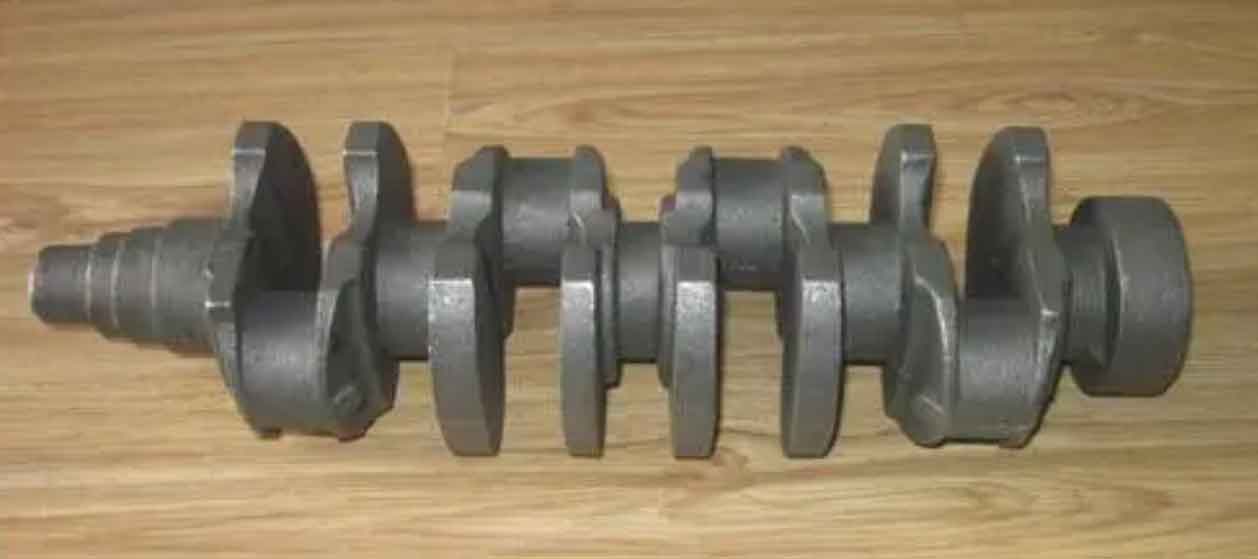Crankshaft is not only the main key transmission part of engine, but also an important safety part. When the engine is working, the power is transmitted to the crankshaft through the piston connecting rod, so the crankshaft bears torsional fatigue, bending fatigue and continuous small energy multiple impact load. According to a large number of analysis of crankshaft failure at home and abroad, 80% of them are bending fatigue fracture, but there are also cases where the service life is shortened and even early damage is caused by low wear resistance. In order to ensure reliable operation, the crankshaft must have sufficient stiffness, fatigue strength (mainly bending fatigue strength) and good wear resistance. The materials of crankshaft can be basically divided into nodular cast iron and forged steel. The research shows that the cost of nodular cast iron crankshaft is significantly lower than that of steel crankshaft, while the bending bearing capacity is increased by more than 50%. Taking S1100 crankshaft as an example, the price of a nodular cast iron crankshaft is generally 87-110 yuan, while the price of a forged steel crankshaft is 130-180 yuan. Therefore, nodular cast iron crankshaft has obvious technical and economic advantages. At present, the casting process of nodular cast iron crankshaft is mainly composed of wet mold sand, iron mold coated sand, shell mold coated sand (filled iron shot).
How to prevent casting defects such as shrinkage porosity and shrinkage cavity in the production of nodular cast iron crankshaft castings is the key to ensure the production of qualified castings. The shrinkage porosity and shrinkage cavity are caused by the volume change of nodular iron castings during solidification. The volume change of nodular iron castings during solidification consists of the following four parts:
(1) liquid shrinkage: the volume shrinkage of molten iron in the process of cooling from its superheated temperature to liquidus temperature (solidification start temperature). According to relevant data, the volume shrinkage value is about 1.6% / ∆ T100 ℃ overheating.
(2) solidification shrinkage: volume shrinkage of metal body (austenite) during solidification of molten iron. The volume shrinkage of graphitization is considered as 3%.
(3) graphitization expansion: according to relevant data, the volume increases by 2% for every 1% of carbon graphitization.
(4) the overall dimension change of nodular cast iron crankshaft at the end of solidification mainly depends on the mold stiffness.
For nodular cast iron crankshafts of general medium and small engines, the maximum solubility of carbon in austenite is 2% – 1 / 3 according to the pouring temperature above 1300 ℃, carbon equivalent of 4.4 ~ 4.5% (C: 3.8%, Si: 2.1%) × Si%), the sum of the first three volume changes is: – 0.4% – 1.2%. In other words, under the condition of sufficient mold stiffness, graphitization expansion is not enough to make up for the volume shrinkage of liquid and solidification. Therefore, the key to producing qualified castings of nodular cast iron is to completely solve the casting defects of shrinkage porosity and shrinkage cavity.
Multi cylinder nodular cast iron crankshaft shell casting has been successfully used in actual production at home and abroad, while single cylinder nodular cast iron crankshaft shell casting only stays in the exploration stage, and there is no report on actual production so far.
The purpose of the research is to optimize the shell casting process of nodular cast iron crankshaft of single cylinder diesel engine, so as to produce nodular cast iron crankshaft blank with reasonable strength and toughness.

